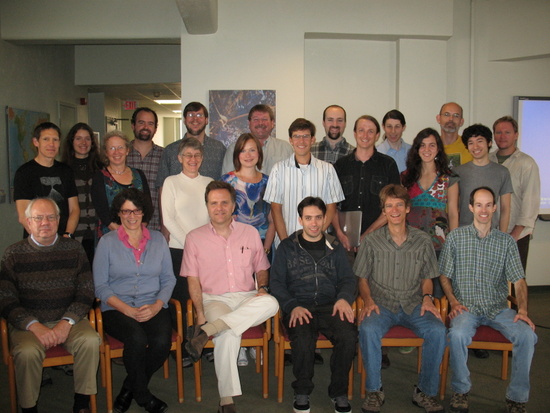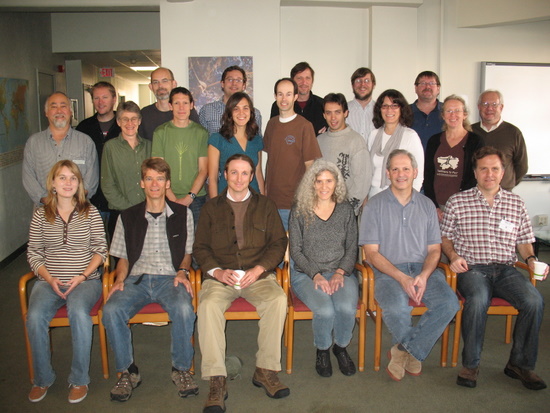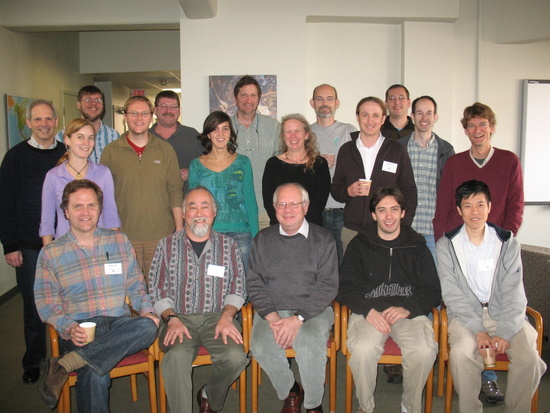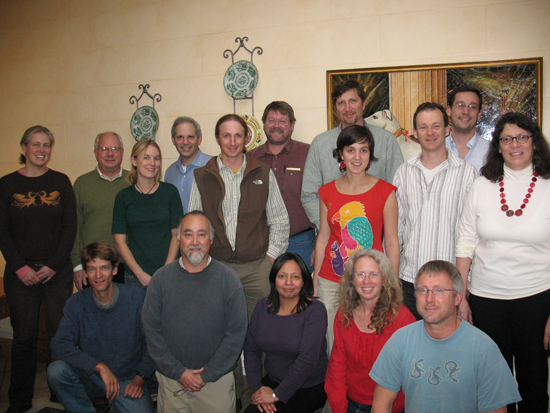Developing an integrated botanical information network to investigate the ecological impacts of global climate change on plant biodiversity
Project Description
Ecosystems change naturally as well as due to human intervention. Species ranges expand and contract, and some species become extinct. Sometimes these changes fundamentally impact the diversity and function of local communities. Documenting large shifts in species' abundance and ranges requires data from entire biogeographic provinces. Most datasets; however, originate from individual researchers and cover local scales. These efforts represent only a small part of the full evidence which could be brought to bear upon any given research question. If we could combine the millions of vegetation plots, botanical inventories, and specimens collected since the birth of plant ecology in the late 1800s, we would have an enormous baseline database for addressing questions on plant diversity and distributions that have not been addressed before.
This Working Group brought together:
- Leading collectors and managers of botanical survey and inventory data
- Informaticians
- Ecologists doing synthetic research across scales
This Working Group integrated, for the first time, the most significant existing sets of vegetation data spanning North and South America. This effort incorporated database resources for plant plot information and taxonomies and will encompass several million records of species occurrences. The result will be the largest assembly of data on plant diversity and distribution for both tropical and temperate plant species yet created. This will address basic yet critical questions regarding how climate and climate change influence species range sizes, abundance, and extinction risk.
BIEN website and ongoing database development work
This work was supported by the National Center for Ecological Analysis and Synthesis, a Center funded by NSF (Grant #EF-0553768), the University of California, Santa Barbara, the State of California and the iPlant Collaborative.




Principal Investigator(s)
Project Dates
Start: August 1, 2008
End: May 1, 2010
completed
Participants
- Jorge Ahumada
- University of Hawaii
- Sandy J. Andelman
- Conservation International
- Benjamin Blonder
- University of Copenhagen
- Brad Boyle
- University of Arizona
- Jeannine M. Cavender-Bares
- University of Minnesota, Twin Cities
- Richard Condit
- Smithsonian Tropical Research Institute
- Doug Daly
- New York Botanical Garden
- Barbara H. Dobrin
- University of Arizona
- Steven Dolins
- Bradley University
- John C. Donoghue
- University of Arizona
- Kristine Engemann Jensen
- Aarhus University
- Brian J. Enquist
- University of Arizona
- Eric H. Fegraus
- Conservation International
- Karla Gendler
- University of Arizona
- Steve Goff
- University of Arizona
- Peter Jørgensen
- Missouri Botanical Garden
- Nathan J.B. Kraft
- University of British Columbia
- Gabriela Lopez-Gonzalez
- University of Leeds
- Zhenyuan Lu
- USDA Agricultural Research Service (ARS)
- Yadvinder Malhi
- University of Oxford
- Aaron Marcuse-Kubitza
- University of California, Santa Barbara
- Naim Matasci
- iPlant Collaborative
- Brian J. McGill
- University of Arizona
- Sheldon McKay
- University of Arizona
- Naia Morueta-Holme
- Aarhus University
- Martha Narro
- University of Arizona
- Jeffrey E. Ott
- University of North Carolina, Chapel Hill
- Robert K. Peet
- University of North Carolina, Chapel Hill
- Oliver Phillips
- University of Leeds
- William Piel
- Yale University
- Shashwati Ramteke
- Bradley University
- James Regetz
- University of California, Santa Barbara
- Brody Sandel
- Aarhus University
- Mark P. Schildhauer
- University of California, Santa Barbara
- Irena Simova
- Charles University
- Lindsey L. Sloat
- University of Arizona
- Nick Spencer
- Landcare Research
- Jens-Christian Svenning
- Aarhus University
- Nathan G. Swenson
- Michigan State University Museum
- Hans ter Steege
- Universiteit Utrecht
- Barbara Thiers
- New York Botanical Garden
- Cyrille Violle
- University of Arizona
- Corine Vriesendorp
- Field Museum
- Susan K. Wiser
- Landcare Research
Products
-
Presentations / 2013
Assembly of plant communities in climate space
-
Journal Article / 2014
Separating macroecological pattern and process: Comparing ecological, economic, and geological Systems
-
Journal Article / 2015
Linking environmental filtering and disequilibrium to biogeography with a community climate framework
-
Journal Article / 2013
The taxonomic name resolution service: An online tool for automated standardization of plant names
-
Journal Article / 2015
A comparative framework for broad-scale plot-based vegetation classification
-
Journal Article / 2016
Megafauna extinction, tree species range reduction, and carbon storage in Amazonian forests
-
Journal Article / 2015
Limited sampling hampers "big data" estimation of species richness in a tropical biodiversity hotspot
-
Journal Article / 2016
Patterns and drivers of plant functional group dominance across the Western Hemisphere: A macroecological re-assessment based on a massive botanical dataset
-
Report or White Paper / 2016
Cyberinfrastructure for an integrated botanical information network to investigate the ecological impacts of global climate change on plant biodiversity
-
Journal Article / 2021
How deregulation, drought and increasing fire impact Amazonian biodiversity
-
Journal Article / 2015
How a national vegetation classification can help ecological research and management
-
Journal Article / 2016
Plant-O-Matic: A dynamic and mobile guide to all plants of the Americas
-
Journal Article / 2015
Intercontinental comparisons of habitat levels of invasion between temperate North America and Europe
-
Journal Article / 2014
Functional trait space and the latitudinal diversity gradient
-
Journal Article / 2017
The bien r package: A tool to access the Botanical Information and Ecology Network (BIEN) database
-
Journal Article / 2019
Temperature shapes opposing latitudinal gradients of plant taxonomic and phylogenetic B diversity
-
Journal Article / 2019
Temperature shapes opposing latitudinal gradients of plant taxonomic and phylogenetic β diversity
-
Journal Article / 2013
Habitat area and climate stability determine geographical variation in plant species range sizes
-
Journal Article / 2016
A network approach for inferring species associations from co-occurrence data
-
Journal Article / 2021
The adaptive challenge of extreme conditions shapes evolutionary diversity of plant assemblages at continental scales
-
Journal Article / 2015
Scale-dependent responses of longleaf pine vegetation to fire frequency and environmental context across two decades
-
Journal Article / 2012
VegBank - a permanent, open-access archive for vegetation-plot data
-
Journal Article / 2015
Shifts in trait means and variances in North American tree assemblages: Species richness patterns are loosely related to the functional space
-
Journal Article / 2018
Spatial patterns and climate relationships of major plant traits in the New World differ between woody and herbaceous species
-
Journal Article / 2019
The relationship of woody plant size and leaf nutrient content to large-scale productivity for forests across the Americas
-
Journal Article / 2014
The emergence and promise of functional biogeography
-
Journal Article / 2011
Veg-X - An exchange standard for plot-based vegetation data
